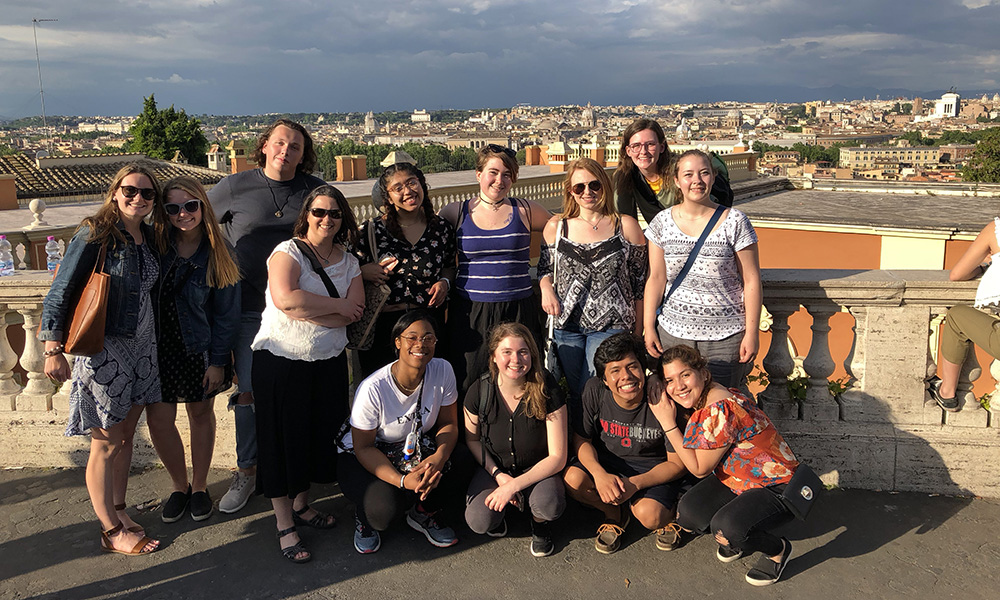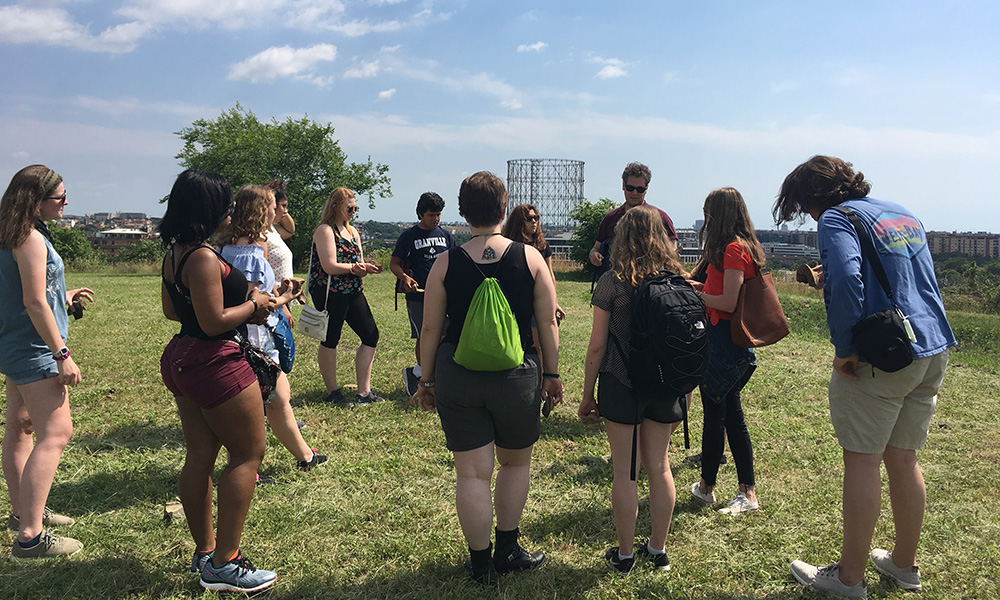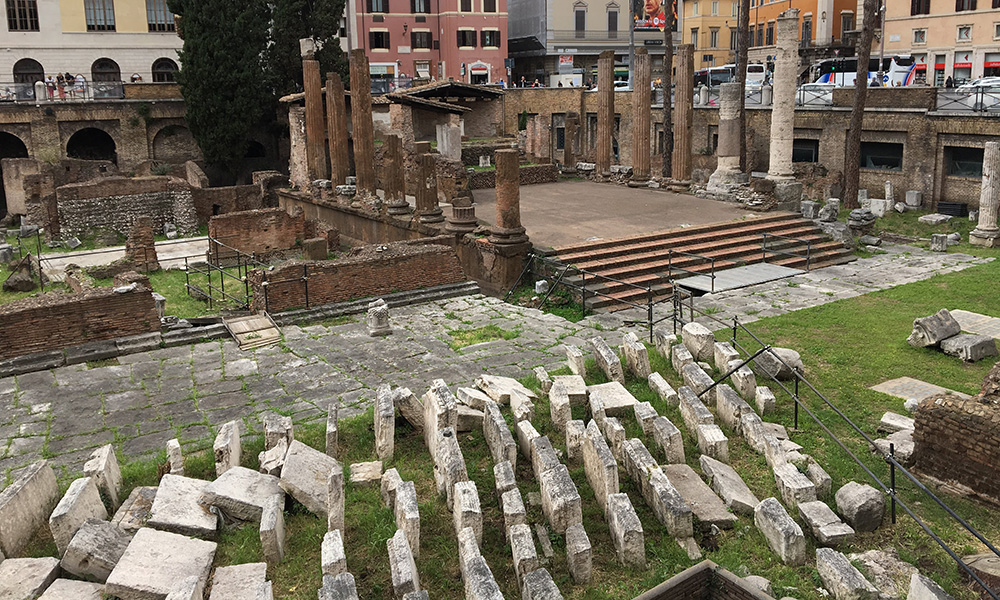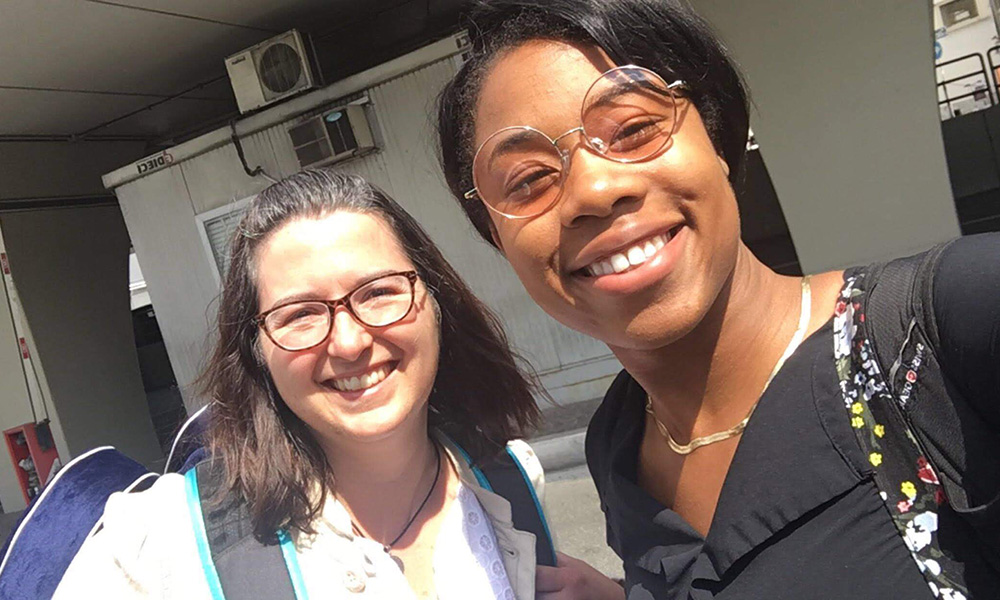In the summer of 2018, a dozen Denison students studied the ancient art and archaeology of Rome.
On foot, by bus, metro pass and Google Maps downloads, they learned how to navigate a modern, international city. They got to know the city itself and what it means to live in a place that is also a UNESCO World Heritage Site, where ruins and the ancient world are part of everyday life of its citizens.
In a city overrun by tourism, the students eschewed shuttle rides to see and experience Roman history, culture, and daily life in a different way. The two-week class was a special opportunity — both a Summer Scholars research program and a Denison Seminar, a team-taught course that typically takes students off campus to learn directly at the source of their subject.
Led by Associate Professor Rebecca Kennedy and Visiting Assistant Professor Max Goldman, the group of 12 traveled to Italy, studying history and investigating significant sites, monuments, and museum collections in Rome and the bay of Naples. From day one when the students walked up the Gianicolo to see the best view of Roma, the city — in essence their course — was literally laid out at their feet.
“There is no classroom component,” explains Kennedy, a historian of the ancient world and director of the Denison Museum. “It’s a hands-on learning experience with no background required in the ancient world, art, or architecture.”
Naturally, one of the main goals of the intensive study was to learn about ancient art and architecture. But, as Kennedy points out, traveling abroad to see wall paintings or sculpture in their own environment actually matters.
“It’s a hands-on learning experience with no background required in the ancient world, art, or architecture.”
“It’s very different to experience something in a classroom than it is to experience it in its space,” Kennedy says. “It is impossible to understand how space and objects work in two-dimensional form, from a picture or reading about it. Viewing a work of art on a television screen or computer monitor is fundamentally different than seeing that work of art in its original context.”
The travelers spent time on and off the beaten path around Rome and southern Italy, at the Colosseum, Palatine Hill, Paestum, and the Ara Pacis Museum. Every day, they traced the steps of the Roman people and studied how art and architecture played a huge role in forming the empire.
“I loved every minute of it,” says Cierra King ’20, a communication major and theater minor, “even the time we spent at Pompeii under the hot, sweltering sun looking for mosaics, Roman baths, small shops, and forums.”
All of the students created a StoryMap of their journey, annotating their destinations and activities daily. They were told where to go and when to meet up. They were required to use transit on their own and gained confidence in their ability to get around in a foreign city. As they accomplished their tasks, the students crowdsourced a photo album of their adventure, maintained personal, visual journals and gave pre-assigned site presentations.
In between the art and the architecture, they savored a bit of the sweet life of Italy, strolling to museums fueled on gelato and coffee. But it was certainly more than that.
“This trip truly shaped my thinking and created awareness for me to better understand the society and culture I live in today,” King says. “Thanks to amazingly passionate professors and delicious food, I gained an amazing knowledge and experience abroad.”







